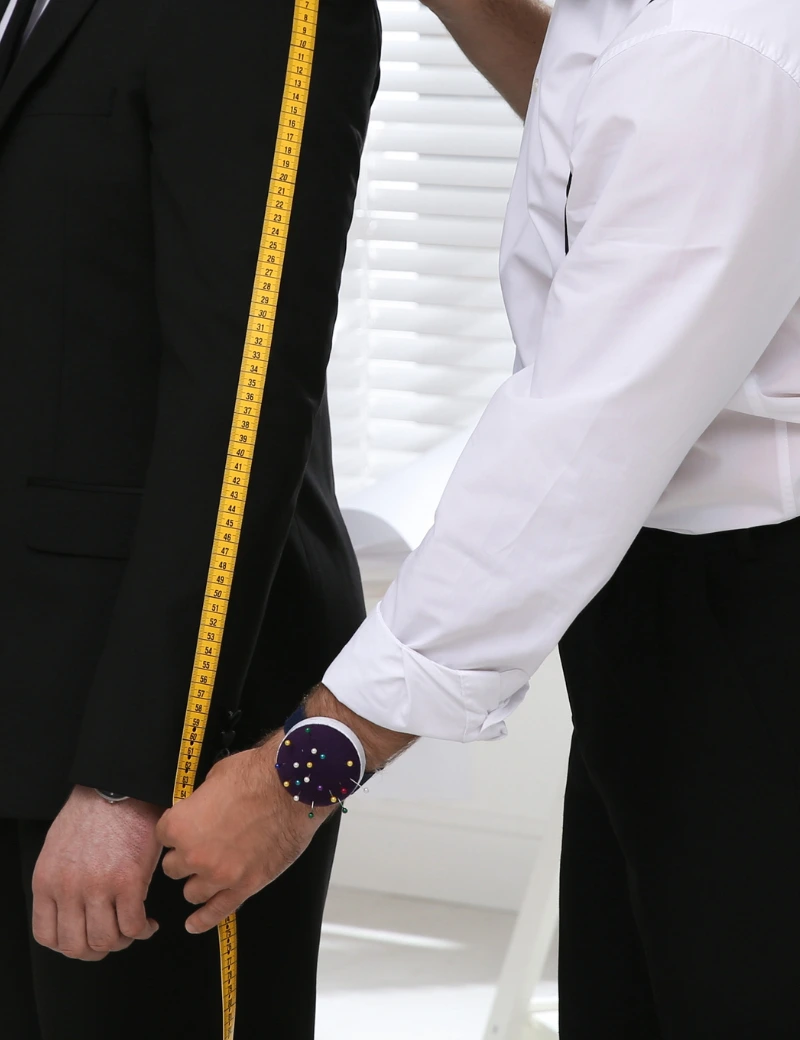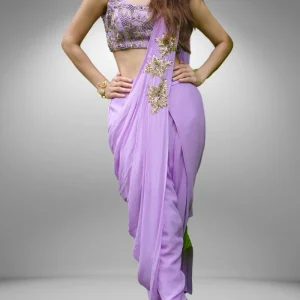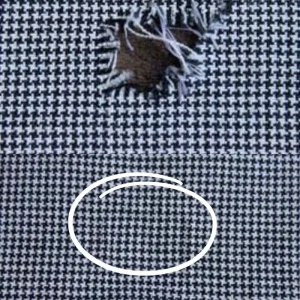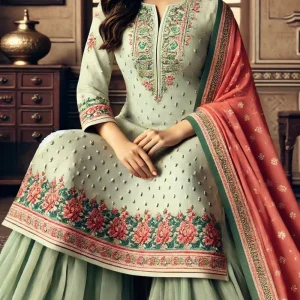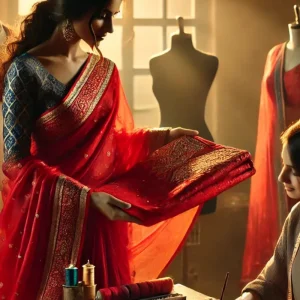No products in the cart.
Sleeve Adjustment for Men’s Clothes
From ₹149.00
Sleeve adjustments are key to achieving a well-fitted and comfortable look in Indian men’s garments. Whether it’s shortening or lengthening sleeves, narrowing or widening them, or adjusting the cuffs or pleats, a professional tailor can make sure that the sleeves sit perfectly and complement the rest of the garment. Proper sleeve adjustments ensure that the garment looks sharp, feels comfortable, and moves easily with the body—whether it’s a kurta, sherwani, bandhgala, shirt, or suit.
Choose any of the below options tailored to your occasion.
Description
Sleeve adjustments are an essential part of tailoring Indian men’s garments, ensuring that the sleeves fit comfortably and look sharp while complementing the overall design. Whether it’s a kurta, sherwani, Nehru jacket, bandh gala, shirt, or suit, sleeve adjustments can make a huge difference in the fit and comfort of the garment. Here are some key pointers on making sleeve adjustments in Indian men’s clothing:
1. Adjusting the Length of Sleeves:
- Shortening the Sleeve: If the sleeves of a kurta, shirt, sherwani, or jacket are too long, they can be shortened by removing the cuffs (if any), trimming the fabric, and re-hemming them to the desired length. The ideal sleeve length should generally end just above the wrist bone for a neat, polished look. For formal wear like suits, the sleeve length should allow for the cuff of the shirt to slightly peek out from the jacket sleeve.
- Lengthening the Sleeve: If the sleeves are too short, it’s possible to lengthen them by adding fabric, but this depends on the original seam allowance. If there’s no excess fabric to let out, it may be necessary to add a matching fabric or trim to the sleeve. For example, sherwanis and kurta-style jackets may have decorative borders at the cuffs that can also be extended for length.
- Sleeve Length for Comfort: Ensure that the sleeve length allows for ease of movement, especially in kurta and sherwani sleeves. Sleeves should be neither too tight (which restricts movement) nor too loose (which may look unkempt).
2. Adjusting the Sleeve Width:
- Narrowing the Sleeve: If the sleeve feels too wide, such as with some traditional kurtas, bandhgala jackets, or loose-fit shirts, a tailor can narrow the sleeve by taking in the side seams or the sleeve seam. This can help create a more slim, fitted look and avoid excess fabric that might look baggy or sloppy. Narrowing the sleeve also adds to the overall formality and structure of the garment.
- Widening the Sleeve: If the sleeve feels too tight, for example, around the biceps or forearms, the sleeve can be loosened by letting out the seams. This is particularly important for kurta sleeves or sherwanis where too-tight sleeves may restrict arm movement or cause discomfort.
- Sleeve Design Considerations: Consider the design of the garment when adjusting sleeve width. For example, Angrakha kurtas or churidar kurta sleeves often have a wider cuff or bell-style sleeve, and altering these styles can affect the garment’s aesthetic. It’s important to maintain the traditional design while adjusting for fit.
3. Adjusting the Cuffs:
- Tightening or Loosening Cuffs: The cuffs of shirts, sherwanis, and kurta-style jackets can sometimes be too tight or too loose around the wrist. A tailor can adjust the cuff to fit more comfortably by tightening or loosening the buttonhole or resizing the cuff entirely.
- Changing Cuff Styles: In formal wear like shirts and suits, cuffs can be either button cuffs or French cuffs. If the shirt or jacket cuffs don’t feel right, they can be switched out for a different style, such as adding a French cuff for a more elegant, formal look or adjusting the size of the cuff buttonhole.
- Adding Decorative Elements to Cuffs: If the original cuffs need to be lengthened, fabric can be added in the same material or with decorative embroidery or contrast stitching, especially in traditional garments like sherwanis or kurta jackets.
4. Sleeve Style Adjustments:
- Adjusting for Different Sleeve Styles:
- Fitted Sleeves: For blazers, bandhgala jackets, and suits, the sleeves are typically fitted and structured, requiring precise tailoring to avoid bunching or sagging at the elbows. Sleeves should hug the arm without being too tight, especially at the shoulder and elbow.
- Roll-up Sleeves: If you want a more casual, laid-back look (often for kurta or shirt styles), a tailor can help adjust the sleeve length for a proper rolled-up effect. This adjustment works best when the sleeve length is right, and the cuff is not too tight.
- Elbow Sleeve Adjustments: Some traditional Indian garments, such as kurta-style jackets or Angrakha kurtas, may feature elbow-length sleeves. If the sleeve is too long or short for this design, it can be adjusted for a more comfortable fit around the elbow.
5. Sleeve Pleats or Gathering:
- Adding or Removing Pleats: For some ethnic wear like sherwanis or kurta jackets, the sleeve may feature pleats or gathers at the shoulder or elbow to create a more structured or voluminous effect. If these pleats are too much, they can be taken in to reduce bulk or reshaped for a more flattering look. On the other hand, if the sleeves feel too plain, additional pleats or gathers can be added to achieve the desired effect.
- Fixing a Puckered Sleeve: Puckering in sleeves occurs when the fabric is not evenly distributed or the stitching tension is uneven. If this happens, the tailor can re-stitch the sleeve, adjust the tension, and ensure the fabric falls smoothly without puckering.
6. Adjusting Sleeve Length for Cuffed or Sleeve-less Designs:
- Cuffed Sleeve Adjustments: For sleeves with cuffs (often seen in formal kurtas, shirts, or sherwanis), if the cuff doesn’t sit correctly around the wrist or is too loose, it can be tightened by adjusting the cuff size or stitching. The cuff should sit comfortably without being too tight or too loose.
- Sleeveless Styles: If the sleeveless kurta or sherwani is not fitting well at the shoulder or armhole, the sleeve-less opening can be adjusted to ensure it fits properly around the arm without gaping or feeling too tight.
7. Correcting for Shrinking or Stretching:
- Shrinking Fabric: Certain fabrics, especially cotton or linen, may shrink after washing. This can result in sleeves that no longer fit properly. If a shirt, kurta, or jacket sleeve becomes too short or tight after washing, a tailor can unpick the sleeves and re-lengthen them if possible, or add extra fabric to ensure a proper fit.
- Stretching of Fabric: On the other hand, if fabric stretches over time (for example, in a woolen kurta or shirt), the sleeve may become loose or baggy. A tailor can re-fit the sleeve by taking in excess fabric or adjusting the armhole.
8. Tailored Fitting for Movement:
- Ease of Movement: Indian men’s garments often need adjustments to ensure that the sleeve allows free movement without being too restrictive. When tailoring the sleeves of suits, shirts, or kurtas, the tailor must ensure that the sleeves are not too tight, particularly at the shoulder or elbow, to allow for comfort and flexibility.

